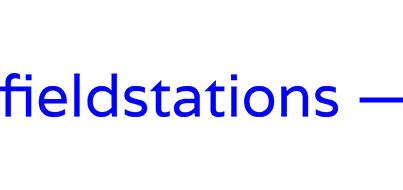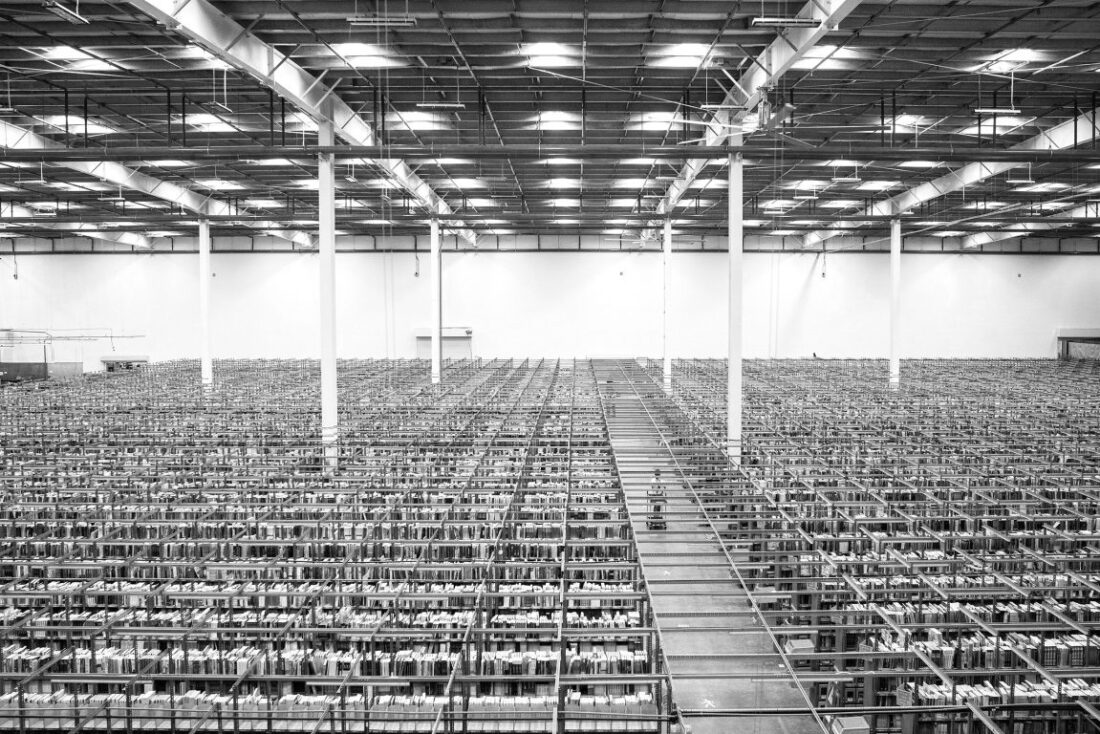Platforms
KU Leuven | Field Station ADO Ghent
Architecture Master Design Studio 2018
Michiel Helbig, Corneel Cannaerts
FIELDSTATIONS ADO / NETWORK
Field Station ADO is a local node in the international fieldstations network, exploring architecture in relation with contemporary fields, connected to the Anthropocene and Technosphere. The ADO focuses on the agency of emerging technologies and phenomena, and their impact on the culture and practice of architecture and the environment in which we operate as architects. We propose an exploratory architectural design studio, aiming to investigate the potential of architecture as a medium to disrupt, explore and raise questions, rather than solving them. The academic design office combines exploratory research with hands-on architectural design exercises, field trips and workshops, providing a platform for students to develop their own interests, skills and projects within the proposed topics.
The built reality is only one layer that makes up the environments we inhabit, it is influenced by other material and immaterial layers, and it contributes to larger economic, material, environmental, informational and infrastructural systems. Within the Field Station Studio, this expanded field, this constantly changing, layered and hybrid environment as the context that architecture operates in and actively engages with. We think that architects should proactively engage this complex reality of today rather than passively waiting for design briefs and projects. Field Station Studio trains students in taking position within contemporary fields and provides them with a platform for developing their future practice. Our weapons of choice are design fiction, spatial narratives, speculative media, imagineering, hacking and critical making.
THE URGENCY OF PLATFORMS
Recently, the notion of platforms has taken on different meanings through the increasing digitalisation of many areas within society: from production, commerce, over media, science, culture and politics. Data has become an increasingly valuable resource within all these fields. Since Edward Snowden’s revelations, we know that government and intelligence agencies are actively harvesting our data at a vast scale (Metahaven, 2015). Large tech corporations in particular have leveraged data collection, storage, and processing to increase revenue, disrupting existing products and services and inventing new ones from scratch. In his book Platform Capitalism, Nick Srnicek describes how platform-based businesses are increasingly monopolising the global economy. What big tech platforms – google, apple, facebook, amazon, alibaba – have in common is that they work as intermediaries between providers and customers, outsourcing costs and responsibilities and leveraging data for optimising their mode of operation (Srnicek, 2017). Google and facebook still depend on advertisement as their main source of income, other platform based businesses get their revenue from mediating transactions of material goods and services, as is demonstrated by uber, airbnb, deliveroo and other start-ups coming out of incubator and accelerator programs worldwide. The technologies that enable platform economy present themselves as neutral, light and invisible, using metaphors like the cloud, while in fact they have a vast impact on our physical environments (Mattern, 2016). Architecture as a discipline and profession seems to have a hard time responding to the evolutions outlined above, while they will clearly affect if not disrupt architectural cultures and practices.
In this edition Field Station Studio we will explore the notion of platform as an architectural typology, a spatial metaphor, a structural system, an interface where data space and physical space intersect, as a modus operandi, a model for novel architectural entrepreneurship, as a site for counter-cultural resistance… In an attempt to respond to the urgencies platform economy poses for architectural practice and culture.
PLATFORMS FROM A RADICAL PAST
The platform, in its original meaning of a horizontal, raised structure or surface that facilitates certain actions, has a rich history as an architectural typology. Less explicitly political than related notions such as forum or stage, a platform presents itself as neutral, as a surface that gets its meaning through the activities it facilitates. Like scaffolds, platforms are often structures that temporarily occupy space, raised above existing environments, they are often removable and adaptable. The spatial characteristics of platforms – horizontal, raised, adaptable, open, facilitating- lend themselves to architectural proposals that question the solid, rigid nature of architecture and the societies that have constructed them.
Throughout the historical avant-garde of 20s and 30s to the radical architecture of 60s and 70s, platforms have operated as a counter-cultural trope, a short-cut to design an architecture for a more open society. In architectural proposals, such as Le Corbusier’s Plan Libre, over El Lissitzky’s Wolkenbügel, or Mies van der Rohe’s Neue Natinal Gallery, innovations in construction technology are claimed to liberate architecture to spatially, visually and functionally become platforms. Cedric Prices’s Fun Palace, is often ascribed as an anti-building, a platform that enables rather than determines various behaviours, an open structure meant to be assembled and disassembled. Through projects such as Superstudio’s Supersurface or Constant’s New Babylon, Yona Friedman’s, Mobile Architecture, characteristics of platforms are used to present alternative models for cities and societal organisation.
While most of the projects were either not materialised or failed to deliver the envisioned societal change, the lineage of platforms as liberating architectural structures, remains very much alive today. Increased digitalisation of society plays a role in a revival of platforms as an architectural typology, not only by providing means of exchanging ideas an facilitating collaboration and participation but also as a source of inspiration through phenomena such as open source and crowdsourcing.
ALTERNATIVE PRACTICES
Architectural, artistic and design practices are increasingly mediated through platforms: from getting exposure through social media and blogs, through using novel ways of collaborating enabled through digital communication, and the design media we use. While these tend to run on infrastructures owned by large tech corporations, and are far from ‘free’, architects artists and designers are using these to organise events, exchange ideas and promote their work. Cultural institutions have always operated as facilitators, but are increasingly positioning themselves as platforms, through events, curatorship, residency programs, often strengthening their operation through an online presence. There are numerous examples of artists, architects and designers shifting their attention from projects to collectively organise platforms as means of finding an audience for their work, connect and invite peers, and find ways of funding their practices.
Architecture can learn from contemporary phenomena, technologies and strategies, present in other disciplines, which might seem to be outside of the realm of architecture. We believe we need to alter our standard ways of understanding architecture and habitual modes of operation in order for architecture to remain relevant today. Adopting approaches from other fields of artistic and design practice, media arts, installation, performance, video games and interaction design, might enable us to disrupt disciplinary constraints and extend architectural practices into new domains. We are particularly interested in potential pathways being opened by new models of collaboration, open source, hacking, tinkering… etc. Students are actively encouraged to find their own set of tools media and modes of working, we expect a high quality and personal output.
Field Station Studio operates as a collective practice, breaking out of the confines of academic architectural education. The studio will travel and actively seek encounters with thinkers, makers, hackers and artists active in different fields (who are also interested in DIY, out of the box, open source, hacking). The studio will have sessions and meetings in Antwerp, Ghent & Brussels to gather information concerning investigated fields, to exchange alternative practices, to share experience and ideas.
BRIEF
As a consequence of the various contexts outlined above Field Station Studio does not operate in an academic vacuum but in the expanded field, exploring potential and addressing real world urgencies resulting from platform economies. The studio operates as a non-hierarchical platform for sharing and developing ideas and collaborate with external partners, next to developing individual projects there will be collective and collaborative tasks, discussions, events, publications. Rather than finding resolute answers the studio aims to explore potential and raise questions: What role can architect play in this contemporary, layered and complex environment, what can architecture do in responds to platform economies? What can architecture learn from technological, social, cultural platforms? How do we develop protocols, working models for operating as a platform? Can we reclaim some of the radical transformative qualities of platforms? The assignment is split up in two parts, each focusing on part of the issues at hand.
PART I: FIELD GUIDE
Starting from lectures, study trips, reading, presenting and discussing examples and theoretical texts, the aim of the first part is to collectively identify, map and categorise potential of the notion of platforms for contemporary architecture. In groups of three, students focus on a particular topic within the larger theme of platforms and explore this topic trough collecting references, and designing prototypes that demonstrate it relation and relevance for architecture. Potential topics are: platforms as architectural typology, platforms as mediators or disruptors of architectural practice, platforms as economic model for architecture, platforms for architecture exchange, design tools as platforms, anti-platform, architecture as platform. The design is iteratively developed and results in a context less design, in the form of a series of prototypical designs collected in a Field Guide, a catalogue of references and prototypes, its format, scale, the media used and nature of the output, twill depend on the content of the project.
PART II: FIELD STATION
In the second part an extensive workshop will introduce students to the concrete situation of the extension of the Design Museum in Ghent, for which an architectural competition is being organised, a project with many stakeholders and an challenging program, in a complex urban condition and an ambition to operate as a platform. The brief for the studio is different from that of the competition, in an individual exercise, the concepts and prototypes resulting from the first part will be further developed and implemented through the confrontation with this concrete situation and the questions and potential it raises. Students are free to interpret this concrete situation in terms of scope, scale, program, strategy etc. Through an iterative design process this is developed into a proper architectural proposal, with its own internal logic. The nature of this project and to what aspects of the extension of the Design Museum it relates to depends on the content of the project.
REFERENCES
Bratton, Benjamin H. The stack: on software and sovereignty. MIT Press, 2015.
Frase, Peter. Four futures: visions of the world after capitalism. New York : Verso, 2016.
Haff, Peter. K. Technology as a Geological Phenomenon: Implications for Human Well-Being. Geological Society, London, Special Publications, vol. 395, nr. 1, 2014, pp. 301–09.
Kruk, Vinca, Daniel van der Velden, and Metahaven, eds. Black Transparency: The Right to Know in the Age of Mass Surveillance. Berlin: Sternberg Press, 2015.
Mattern, Shannon. Code and Clay, Data and Dirt: Five Thousand Years of Urban Media. University of Minnesota Press, 2017.
Mattern, Shanon, Cloud and Field, On the resurgence of “field guides” in a networked age. Places journal, August 2016
McCullough, Malcolm. Ambient commons: attention in the age of embodied information. MIT Press, 2013.
Oosterman, Arjen, Lilet Breddels, Leaonardo Dellanoce (eds). Volume 51 – Augmented Technology. Archis, 2017.
Redstone, Elias, and Architectural Association (eds). Archizines. London : Bedford Press, 2011.
Runting, Helen, Frederik Torrison & Erik Siege (eds). Lo-Res: Architectural Theory, Politics, and Criticism, ISSN 2002-0260, Vol. 1: High-Rise, 2015.
Srnicek, Nick. Platform capitalism. Polity, 2017.
Turpin, Etienne, ed. Architecture in the Anthropocene: Encounters among Design, Deep Time, Science and Philosophy. Open Humanities Press, 2013.
Young, Liam & Unknown Fields Division, eds. Tales from the Dark Side of the City, AA Publications 2016.
SINTEF. “Big Data, for better or worse.” ScienceDaily. ScienceDaily, 22 May 2013.
Featured Image: Photograph by Benjamin Lowy for Fortune Magazine
FieldStationADO_Platforms



